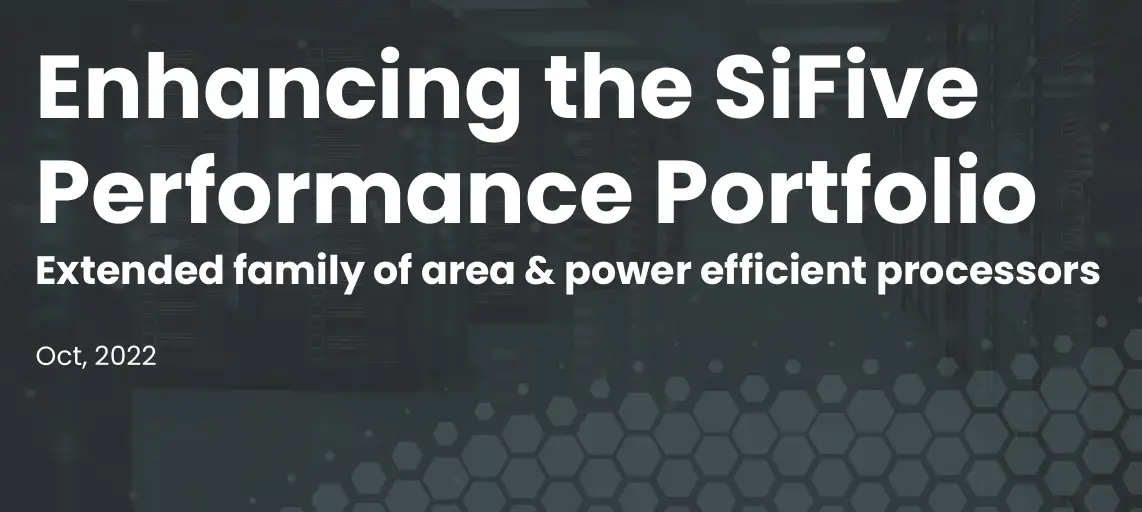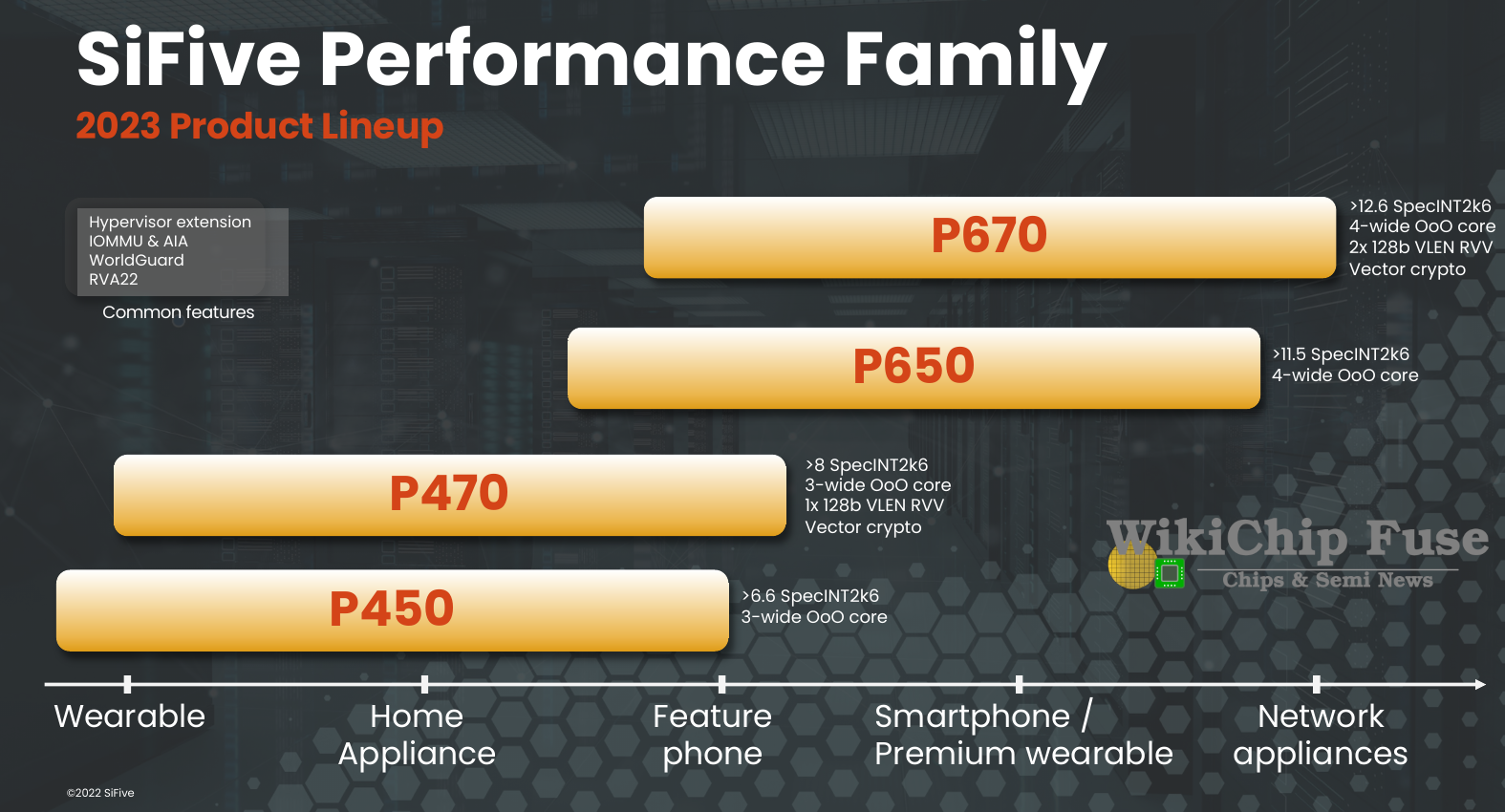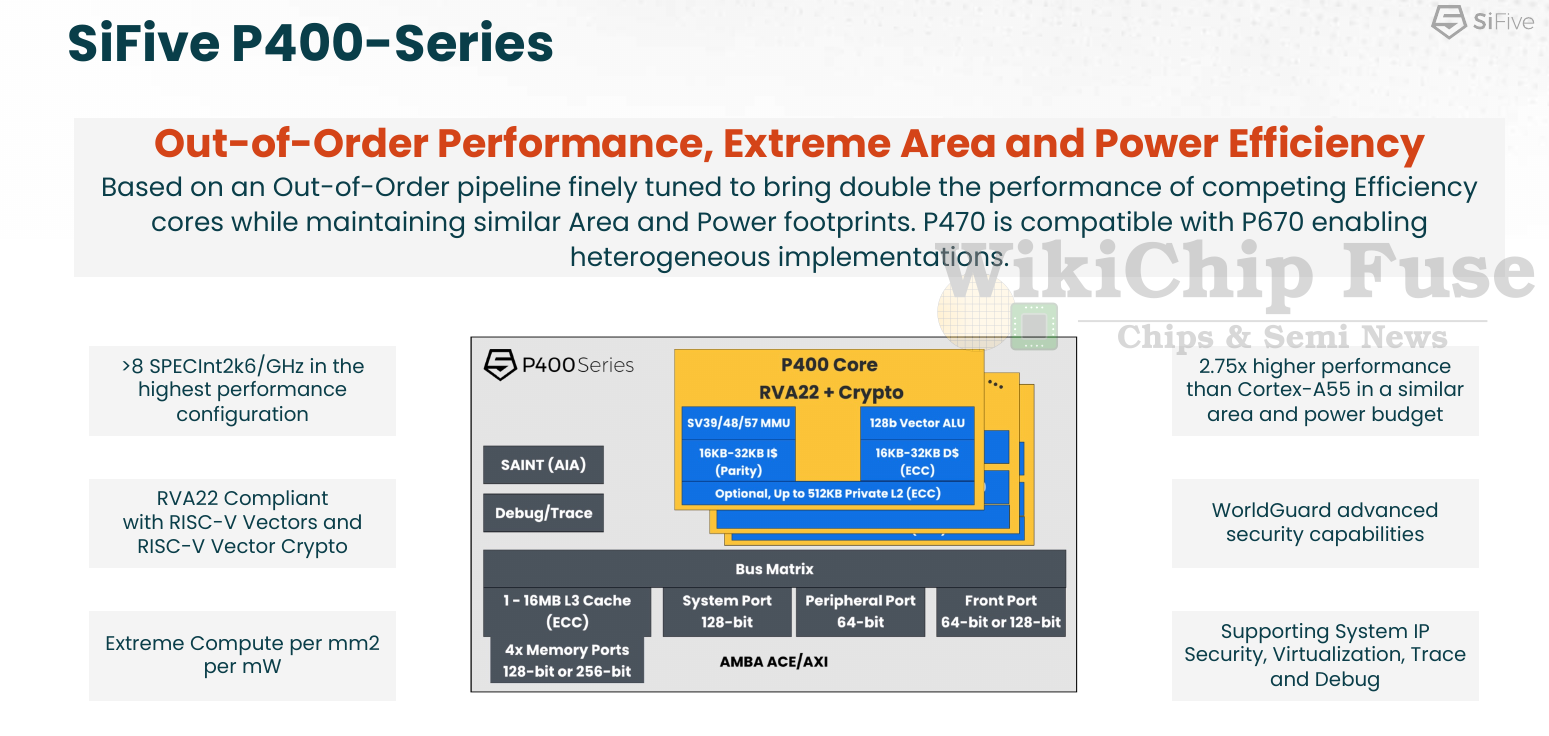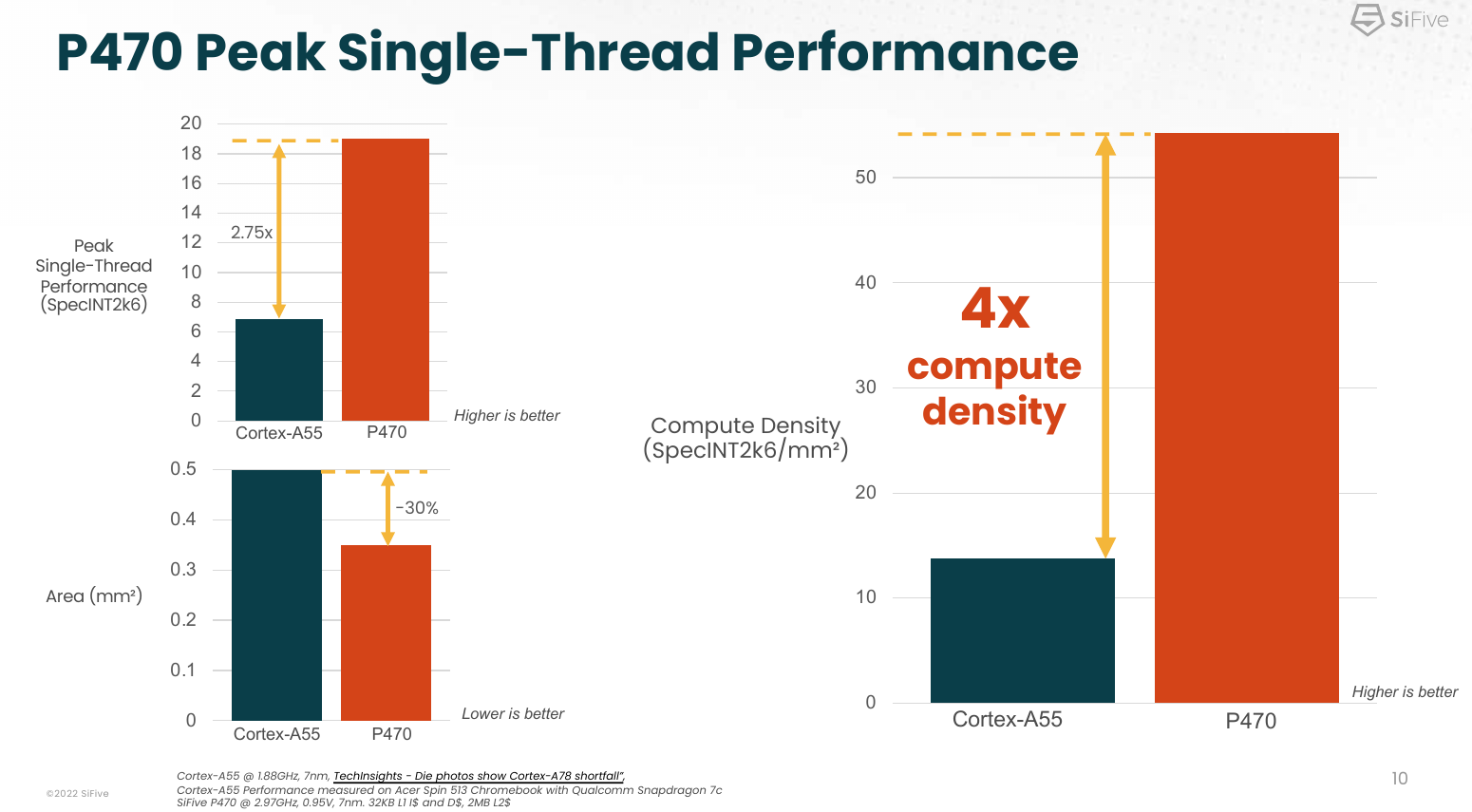SiFive Announces New Cores, BiFurcates Line Into Performance And Efficiency Cores

Today SiFive is announcing their next-generation cores from their SiFive Performance family, their highest-performance line of RISC-V cores. Last year the company rolled out the highest-performance RISC-V, the Performance P550. Today, the company is announcing its direct successor, the Performance P670 processor, likely the world’s highest-performance RISC-V core. As part of this announcement, SiFive is also unveiling a new lower-tier performance core – the P470 core. SiFive has bifurcated the Performance line of processors in order to meet the growing number of new use cases from their partners.
Performance P670 Core
The new SiFive Performance P670 core is the company’s new highest-performance RISC-V. It’s also likely the industry’s highest-performance RISC-V core. Targetting the 5-nanometer class node, the P670 is said to achieve a maximum frequency exceeding 3.4 GHz. That alone is a full 1 GHz improvement over the P550 from last year. Additionally, SiFive is reporting a SPECint2006 of >12/GHz, implying the P670 provides around a 40% uplift in integer performance. The full frequency improvement along with the IPC improvement could potentially deliver up to nearly double the integer performance.
Architecturally, the P670 has been beefed up quite a bit compared to its P550 predecessor. The company widened the entire core throughout to allow for up to four instructions per cycle while extensively enlarging more buffers. We will have a dedicated article covering the new P670 core architecture in a few days.
A new significant feature that comes with the P670 is support for the RISC-V Vector 1.0 specification. The P670 integrates two 128-bit vector units. It’s worth noting that SiFive also offers a trimmed-down version of the P670 called the P650 which simply excludes the vector units for customers that do not require the additional vector capabilities or for customers that are more area constrained.
SiFive compared the P670 to the Cortex-A78. It’s worth noting that since the A78, Arm already launched the A710 and A715. The A710 brought around a 10% improvement in IPC along with 30% energy efficiency while the A715 introduced around a 20% reduction power while improving IPC by another 5%. This puts Arm’s latest A715 at around 15.5% IPC higher than the A78. Nonetheless, SiFive claims the P670 offers performance comparable to the Cortex-A78 (5% lower) while delivering this in half the silicon area on TSMC N7. In other words, SiFive has largely managed to catch up to Arm’s mainstream big cores just a generation or two behind.
Performance P470 Core
The new SiFive Performance P470 core is a new efficiency core. This core is interesting in how it originated. Various SiFive customers are already happy with the performance they see with their prior-generation P550 cores. Those customers are now more interested in optimizing for area and power efficiency while retaining this level of performance. SiFive sees opportunities for an efficiency core in the growing area of fitness trackers, smartwatches, and other wearables. To that end, SiFive decided to bifurcate its Performance line of cores and introduce a new Efficiency core. The P470 retains a similar maximum frequency to the P670 – exceeding 3.4 GHz on a 5-nanometer-class process technology. And like the P550, the P470 maintains a similar integer performance level at >8/GHz on SPECint2006.
The P470 achieves this by inheriting much of the P550 design but optimizing for power efficiency and area. The result is a high-performance core – comparable in performance to the P550 – but at nearly one-fourth the area of the P670. It’s worth noting that, at least for now, the two cores should be viewed as different performance/area tiers designed for different markets. While their support the same ISA, the intention, at least for now, is not to combine them but rather offer them as different solutions for different customers. SiFive does not currently offer any sophisticated mechanism similar to Arm’s big.LITTLE to balance workloads across different types of cores.
Like the P670, the P470 comes with support for the RISC-V Vector 1.0 specification. It comes with a single 128-bit vector unit. There is also a vector-less version, the P450 – which excludes the vector unit for extremely area-constrained customers.
Where the P470 truly shines is in its compute density. While Arm has introduced a new efficiency core – the Cortex-A510 – many Arm customers are likely to remain on the older Cortex-A55 for the foreseeable future due to its lower licensing cost as it lacks Armv9 support required for Arm’s big.LITTLE architecture for use with their latest big cores. To that end, since the P470 is very similar in performance to the P550 from last year, SiFive says that the P470 offers around 2.75x the integer performance of the A55 (on SPECint2006). In terms of area, at ISO-process (on TMSC N7), the P470 is said to offer 30% reduction in area at just 0.35 mm along with the vector unit. Putting it all together, SiFive claims the P470 offers up to four times the compute density of the Cortex-A55.
Path to Android
Earlier this year RISC-V introduces profiles. Each RISC-V profile targets a specific base ISA as well as a set of mandatory ISA extensions and some options to extend those. The move comes as support from Google for building AOSP targeting RISC-V gains momentum. Android upstream support for RISC-V will serve as an important stepping stone for more broader adoption of RISC-V. SiFive new P670 and P470 cores are now RVA22 profiles. The company hopes this will allow the ecosystem to pave a way for supporting Wear OS.
Availability
The new SiFive Performance cores are already available to lead customers.
–
Spotted an error? Help us fix it! Simply select the problematic text and press Ctrl+Enter to notify us.
–






